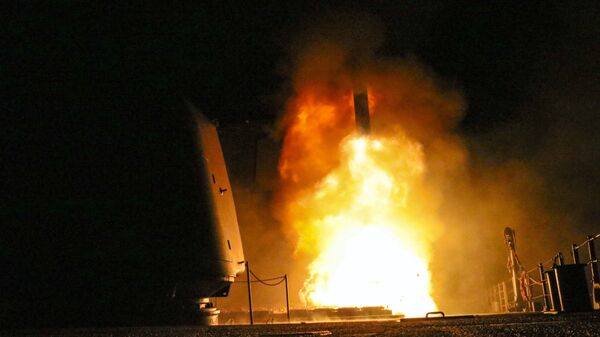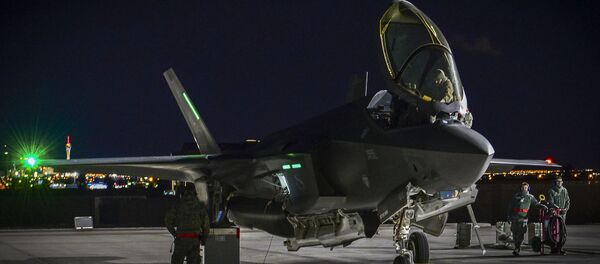In the period after the Second World War, there was a massive deployment of US military power in Italy, which included US troops and military bases, such as the Camp Ederle base in Vicenza. In the 1960s, a number of ballistic missiles were deployed in Southern Italy, which put the country at risk of nuclear retaliation from the USSR.
So, can Italy once again become a target of a Russian armed response in the event of war?
Sputnik spoke to Mirko Molteni, a military expert to find out about the deployment of nuclear weapons in the 1960s as well as to learn about the current situation in Italy.
Mirko Molteni: The idea to install intermediate-range ballistic missiles (IRBM), such as the Chrysler PGM-19 Jupiter, was born in 1957-1959, as at that time US aircraft didn't have any intercontinental ballistic missiles (ICBM) capable of flying from North America to the USSR.
It was then decided to deploy the Jupiter missiles in Puglia, as well as in Turkey, as having a range of 2,800 km, these missiles could have in their sights not only Soviet facilities deployed in Warsaw Pact countries but also the region of Moscow and most of European Russia.
READ MORE: Quitting INF: US Likely to Develop New Missiles to Counter China — Scholar
Sputnik: At the time, what were the relations like between the USSR and Italy?
Mirko Molteni: Back then, Italy was strongly aligned with US policies. On 26 March 1959, Italy and the United States signed an agreement on the deployment of Jupiter missiles. In 1960, the missiles were transported by air to Puglia and entrusted to the Italian Air Force; according to the principle of co-participation, there was dual command — both Italian and American. In total, there were 30 missiles, distributed at ten launch ranges.
The Jupiter missiles remained in Puglia; they were deployed at open-air launch pads without any protection. There were even accidents caused by thunderstorms, with lightning striking the missiles' heat shields causing a partial activation of the nuclear warheads. On 21 June 1963, the air brigade was dissolved and the bases were dismantled
READ MORE: Italy Examining Claims US Warship Ignored Distress Calls from Migrants in Dinghy
Sputnik: Trump has announced that he wants to withdraw from the INF Treaty. In this context, do you think there is a risk of a new Cold War? Or is it too late, and a new arms race has already begun?
Mirko Molteni: The US actions are going to show us whether it is too late or not. So far, it seems that the 2002 scenario is repeating itself, when Washington unilaterally withdrew from the ABM Treaty, which limited anti-missile defences, in order to have a free hand in that area.
Likewise, it seems that today the United States intends to gradually secure an advantage by combining the already undertaken expansion of anti-missile defences with a capacity to keep Russian bases and forces in their sights, especially considering the crisis in Ukraine or the concerns of Poland and the Baltic States.
Given the long design and development process, it's still probable that there're some new systems, maybe not prototypes, but drawings. In this respect, the arms race is never over.
Mirko Molteni: Russia could consider the deployment of the US intermediate and short-range missiles in Poland or the Baltic States a declaration of war since it would expose Russia to a too high risk of a surprise attack. The Russians had the dramatic experience of 1941 with Operation Barbarossa and they no longer want to be caught unprepared.
On the other hand, the fact that the United States suffered a surprise attack on Pearl Harbour should, in my opinion, spur Washington to understand that if both parties have common fears, they can sit down to talk to understand each other. Someone, like Dmitry Suslov from the Valdai Club, believes that Russia would immediately destroy a US base in Poland as a kind of preventive action. However, this would lead to the activation of NATO's Article 5 and would mean a more extensive war.
I don't think the United States wants to come to this point and is, therefore, more likely to deploy their missiles in countries such as Germany or Italy, or perhaps, Denmark or Norway. This could be a little more acceptable for Russia, which, however, would start deploying similar missiles.
READ MORE: Soros is Trying to Prepare Democrats for a Cold War Against China — Scholar
Sputnik: Do you think the Italian government would agree to re-deploy nuclear missiles against Russia on their national territory?
Mirko Molteni: The military relations between Italy and the United States are governed by various treaties still largely secret, starting from the BIA Treaty signed on 20 October 1954, and others, such as the Shell Agreement of 2 February 1995, or Stone Ax of 11 September 2001. In theory, the Italian government and parliament should have sufficient margin to oppose, if they wish, the deployment of new American nuclear missiles; however, this also depends on what is provided for in the secret agreements.
Sputnik: With the new US military doctrine, should we expect a nuclear confrontation?
Mirko Molteni: Nuclear weapons, in my opinion, should be considered exceptional weapons whose purpose is only to dissuade an adversary from using them. It should be a bit like what happened in the Second World War with chemical weapons, which, unlike the First World War, weren't used, because Germany, the Anglo-Americans, and the Soviets feared the catastrophic consequences of "first use". So, from 1939 to 1945 battles were fought with conventional weapons, without the extensive use of toxic gases, which characterized the war of 1914-1918. Ideally, it should be the same thing with nuclear weapons.
READ MORE: Russia Slams US 60-Day Ultimatum on INF Treaty as 'Game'
Therefore it's always advisable to remain realistic and realise what it would be like to start using atomic weapons as if they were "normal" weapons. There are those who think that limited use of nuclear devices could be possible, but they don't take into account the situation in which heads of government and generals will have to strike a balance between their own emotions and rationality.
If we assume that nuclear war is the worst form of war imaginable, it would be necessary to ensure that great powers return to focusing primarily on conventional weapons, with nuclear weapons serving purely as a deterrent.
Views and opinions, expressed in the article are those of Mirko Molteni and do not necessarily reflect those of Sputnik






